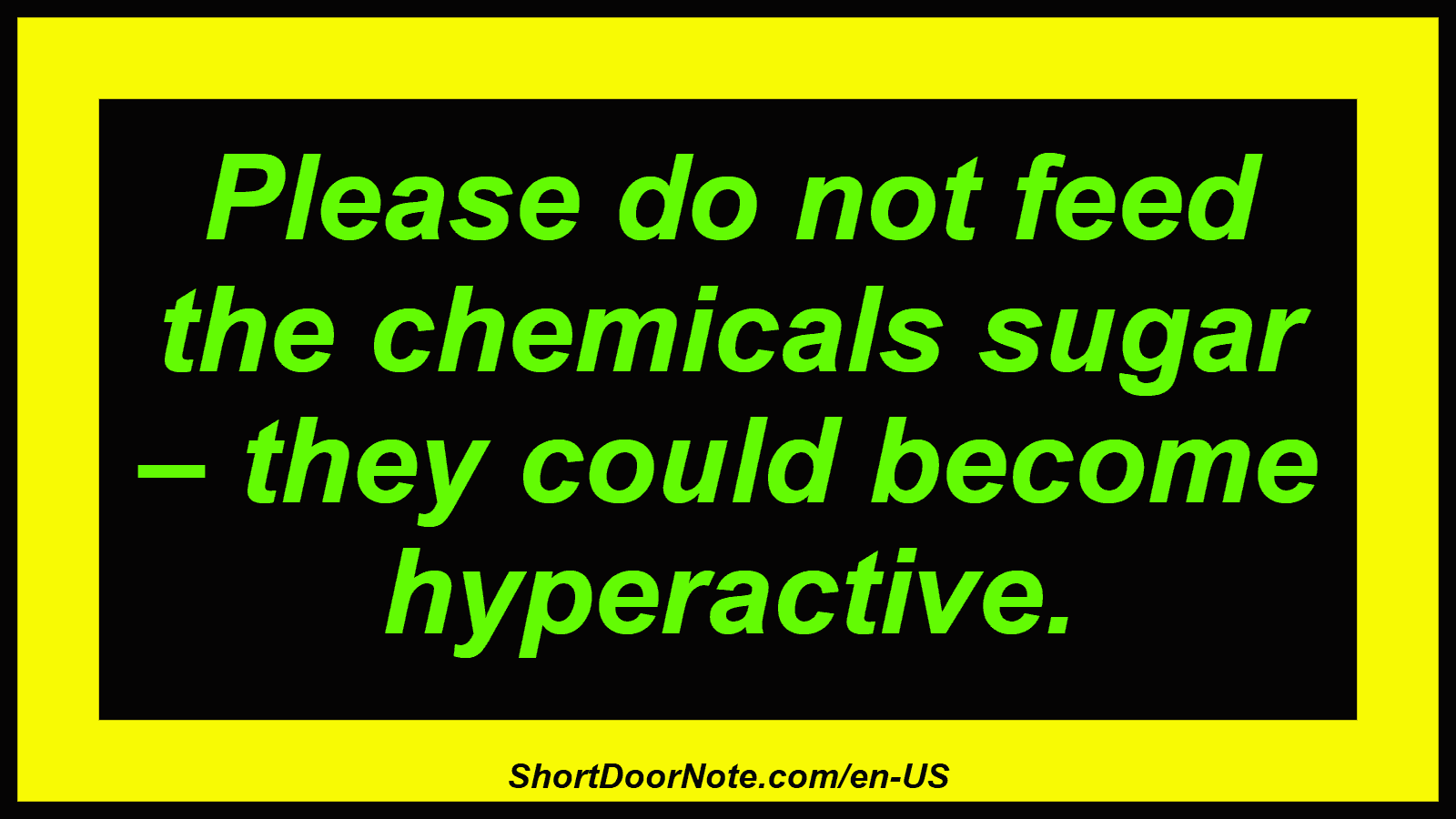Please do not feed the chemicals sugar – they could become hyperactive.
Please do not feed the chemicals sugar – they may become hyperactive. A very relevant tip!

|
Share: |
|
Rate: |
The humorous sign "Please do not feed the chemicals sugar - they may become hyperactive" is a creative and funny way to point out the correct handling of chemicals. Such signs are not only informative, but also a way to present serious topics in a light and engaging way. They can be used in scientific laboratories as well as in industrial or educational contexts.
Context and purpose
In a laboratory setting, the poster serves to raise awareness of the proper handling of chemicals. It is important that chemicals are used correctly and safely to avoid accidents and unwanted chemical reactions. The humorous element of the notice text can increase the attention of staff or students and encourage them to better memorize the warnings.
Humor and Science
The humor in this sign lies in the personification of the chemicals. By ascribing human characteristics such as "hyperactive" to chemicals, a connection is made to everyday experiences. Many people associate sugar with hyperactivity, especially in children, which makes the orientation sign easy to understand and memorable. This type of humor can also lighten the atmosphere in an otherwise serious environment and boost staff or student morale.
Psychological effect
Humorous signs often have a stronger psychological impact than purely informative ones. The laughter or smile that the sign elicits makes the message stick in people's minds. This is especially important in environments where safety is a top priority. A smile can make people more likely to not only read the message, but also remember it and act on it.
Communication strategy
The noticeboard uses a creative communication strategy to get the message across. Rather than giving a dry and potentially ignored instruction, humorous and metaphorical language is used. This strategy can increase the effectiveness of communication as it stimulates interest and presents the information in an accessible way. This can be particularly effective in educational settings where students are often faced with an abundance of information and humorous elements can help focus attention.
Safety and prevention
The sign also plays an important role in safety and prevention work. It reminds employees that certain substances should not be mixed to avoid unexpected reactions. The humorous depiction of the chemicals as "hyperactive" could be a metaphorical allusion to chemical reactions that can be triggered by unexpected mixtures. These reactions can be dangerous and therefore it is crucial that all safety precautions are observed.
Educational function
In educational settings such as schools and universities, the warning sign can serve a dual purpose: it is both safety and educational. By conveying important safety rules in a humorous way, it helps educate students and raises awareness of the need to handle chemicals correctly. It can also serve as a conversation starter to encourage deeper discussions about chemical reactions and safety protocols.
Creativity and innovation
This sign is also an example of creativity and innovation in the field of information communication. By breaking traditional forms of warning and information and replacing them with humorous elements, it shows that serious topics can be communicated in different ways. This type of innovation can help increase the effectiveness of communication in different contexts and improve acceptance of and compliance with safety regulations.
Summary
The "Please do not feed the chemicals sugar - they may become hyperactive" information board is a brilliant example of how humor and creativity can be used to convey important safety messages. It helps to increase awareness and embed the message in the mind, while creating a positive and relaxed atmosphere. In laboratories, industrial settings and educational institutions, such a sign can not only contribute to safety, but also promote awareness and sensitivity about the correct handling of chemicals.
[1004236]




